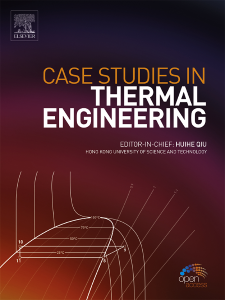考虑房屋空置率的建筑节能相邻房间内部传热实验研究
IF 6.4
2区 工程技术
Q1 THERMODYNAMICS
引用次数: 0
摘要
随着房地产行业的扩张和旅游胜地的兴起,许多人现在拥有多处房产,导致大量房屋长期空置或季节性使用。尽管没有暖气,但这些空置房中的房间仍会将热量传递到相邻的暖气房间。虽然之前的研究已经根据非供暖房间和供暖房间的相对位置探讨了它们之间的热量传递,但很少有研究考虑到这一过程的动态方面。为了填补这一空白,我们开发了一个按比例缩小的模型来复制真实世界的条件,并进行了实验来跟踪不同配置下非供暖房间和供暖房间之间的动态温度变化。我们分析了热传递机制,并构建了一个理论模型来量化动态热交换。该模型考虑了房间之间对流和辐射传热的变化。初步研究结果表明,向供暖空间下方的非供暖房间传热的热量可达总供热量的 28%,而向上方相邻房间传热的热量可达 16%。加热 5-10 小时后可观察到传热峰值。这些结果为优化空间供暖、促进节能实践和提高室内供暖效率提供了宝贵的见解,同时也为行为节能提供了可行的建议。本文章由计算机程序翻译,如有差异,请以英文原文为准。
Experimental study on internal heat transfer among adjacent rooms for building energy efficiency with housing vacancy consideration
With the expansion of the real estate sector and the rise of tourist resorts, many individuals now own multiple properties, resulting in a substantial number of homes remaining vacant for extended periods or being used seasonally. Despite being unheated, rooms in these vacant properties continue to transfer heat to adjacent heated rooms. While previous research has explored the heat transfer between non-heated and heated rooms based on their relative positioning, few studies have considered the dynamic aspects of this process. To fill this gap, we developed a scaled-down model to replicate real-world conditions and conducted experiments to track the dynamic temperature changes between non-heated and heated rooms in different configurations. The heat transfer mechanism was analyzed, and a theoretical model was constructed to quantify the dynamic heat exchange. This model accounts for variations in both convective and radiative heat transfer between rooms. Initial findings suggest that heat transfer to a non-heated room below a heated space can reach 28 % of the total heat supplied, while heat transfer to an upper adjacent room can account for 16 %. The peak heat transfer is observed after 5–10 h of heating. These results provide valuable insights for optimizing space heating, promoting energy-saving practices, and improving indoor heating efficiency, alongside offering actionable recommendations for behavioral energy conservation.
求助全文
通过发布文献求助,成功后即可免费获取论文全文。
去求助
来源期刊

Case Studies in Thermal Engineering
Chemical Engineering-Fluid Flow and Transfer Processes
CiteScore
8.60
自引率
11.80%
发文量
812
审稿时长
76 days
期刊介绍:
Case Studies in Thermal Engineering provides a forum for the rapid publication of short, structured Case Studies in Thermal Engineering and related Short Communications. It provides an essential compendium of case studies for researchers and practitioners in the field of thermal engineering and others who are interested in aspects of thermal engineering cases that could affect other engineering processes. The journal not only publishes new and novel case studies, but also provides a forum for the publication of high quality descriptions of classic thermal engineering problems. The scope of the journal includes case studies of thermal engineering problems in components, devices and systems using existing experimental and numerical techniques in the areas of mechanical, aerospace, chemical, medical, thermal management for electronics, heat exchangers, regeneration, solar thermal energy, thermal storage, building energy conservation, and power generation. Case studies of thermal problems in other areas will also be considered.
 求助内容:
求助内容: 应助结果提醒方式:
应助结果提醒方式:


